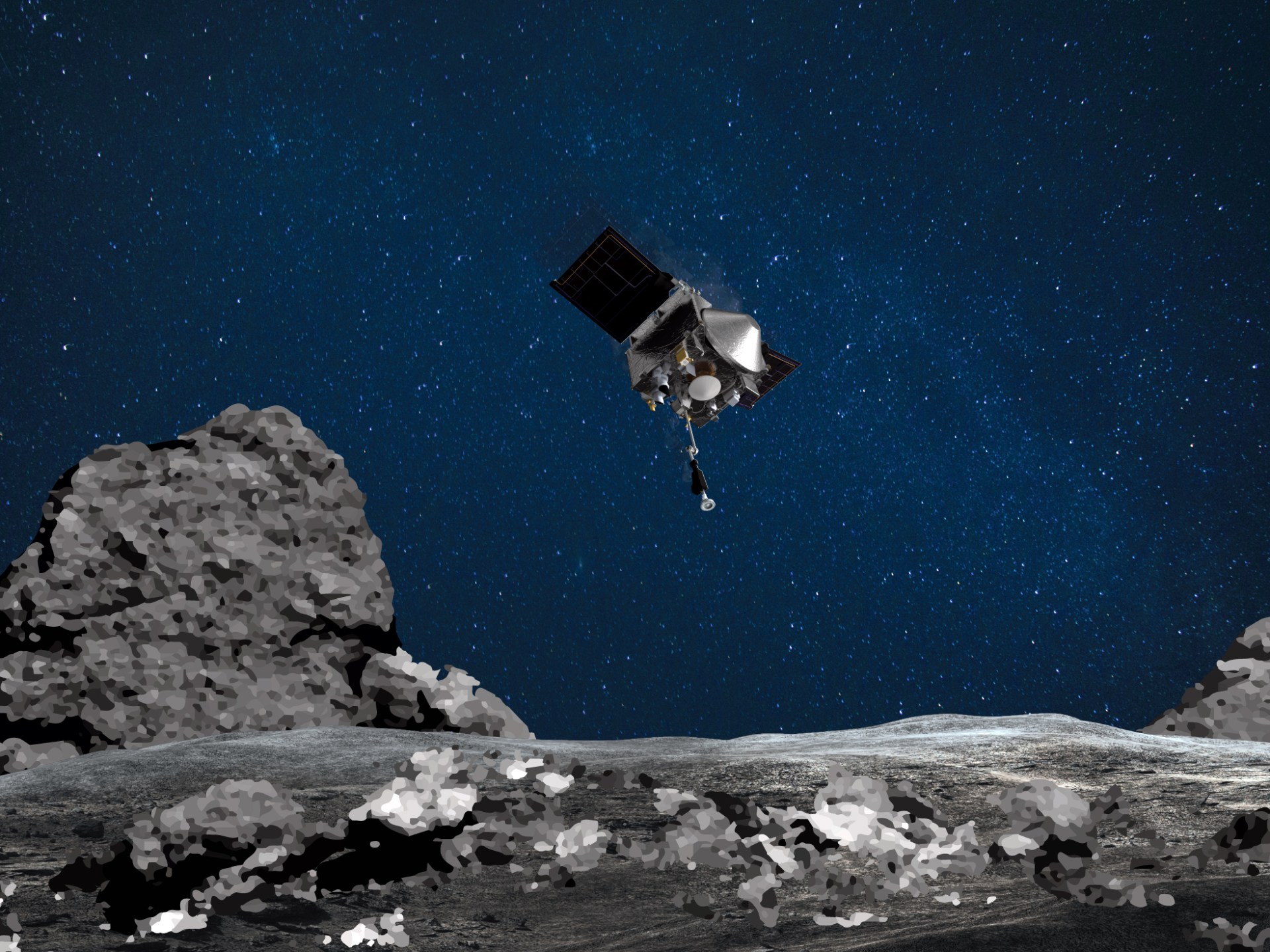NASA unveils sample scooped from surface of near-Earth asteroid Bennu | Space News
US space agency and scientists say sample taken from Bennu contains abundant water and carbon, as well as iron minerals.
A sample of material collected from the surface of the near-Earth asteroid Bennu has been found to contain abundant water and carbon, the US space agency NASA said, offering more evidence for a theory that life on Earth was seeded from outer space.
The findings were announced on Wednesday as NASA gave the public a first glimpse of what scientists found inside a sealed capsule that was returned to Earth last month after carrying material scooped from the 4.5-billion-year-old asteroid’s surface by the OSIRIS-REx spacecraft.
“This is the biggest carbon-rich asteroid sample ever returned to Earth,” NASA administrator Bill Nelson said at a press event at the Johnson Space Center in Houston, where the first images of black dust and pebbles were revealed.
Carbon accounted for almost 5 percent of the sample’s total weight, and was present in both organic and mineral form, while the water was locked inside the crystal structure of clay minerals, Nelson said.
The findings were made through a preliminary analysis involving scanning the sample with electron microscopy, X-ray computed tomography and more.
The preliminary results point to a likelihood of further discoveries that could buttress the hypothesis that early Earth was seeded with the primordial ingredients for life by celestial objects such as comets, asteroids and meteorites that bombarded the young planet.
“The secrets held within the rocks and dust from the asteroid will be studied for decades to come, offering insights into how our solar system was formed, how the precursor materials to life may have been seeded on Earth, and what precautions need to be taken to avoid asteroid collisions with our home planet,” NASA said in a statement.
More carbon than expected and an abundance of water were found in the 4.5-billion-year-old asteroid sample returned to Earth by #OSIRISREx. The two combined could mean that the building blocks for life on Earth might be locked in these rocks: pic.twitter.com/olxjDQG6bm
— NASA (@NASA) October 11, 2023
“This stuff is an astrobiologist’s dream,” said senior NASA scientist Daniel Glavin. Early analysis found the material seems to be “loaded with organics”, he said.
The early findings are the outcome of the seven-year roundtrip that the Osiris-REx spacecraft made to the surface of Bennu before dropping off its collected sample in a sealed capsule that was parachuted back to Earth last month.
OSIRIS-REx launched in 2016 and reached Bennu in 2018, then spent nearly two years orbiting the asteroid before venturing close enough to snatch a sample of the loose surface material with its robotic arm in October 2020.
No one at Wednesday’s event got to see any of the samples firsthand – just photos and video. The asteroid pieces remain behind locked doors in a new lab at the space centre, accessible only to scientists in protective gear.
The images of the sample displayed showed a loose cluster of small charcoal-coloured rocks, pebbles and dust found to have been left in the outer portion of the spacecraft’s sample storage canister. Technicians are still methodically disassembling the canister containing the bulk of the specimen, a process expected to take two more weeks.
But the “bonus” sample of overflow material was immediately examined, said Dante Lauretta, principal mission investigator at the University of Arizona. What scientists found was material high in carbon, nearly 5 percent by weight of an element essential to all life on Earth, as well as water molecules locked in the crystallised structure of clay fibres, Lauretta said.
Scientists also discovered iron minerals in the form of iron sulfides and iron oxides, “which themselves are indicative of formation in a water-rich environment”, Lauretta said at a later news briefing.
The asteroid, Bennu, discovered in 1999, is described by scientists as a relatively loose clump of rocky material, like a rubble pile, held together by gravity. It measures about 500 metres across (0.3 miles).
Like other asteroids, Bennu is a relic of the early solar system. Because its present-day chemistry and mineralogy are virtually unchanged since its formation, it holds clues to the origins and development of rocky planets such as Earth and could prove central to studies of astrobiology.
In the months ahead, the overall asteroid sample is to be parcelled out into smaller specimens promised to some 200 scientists in 60 laboratories around the world.




